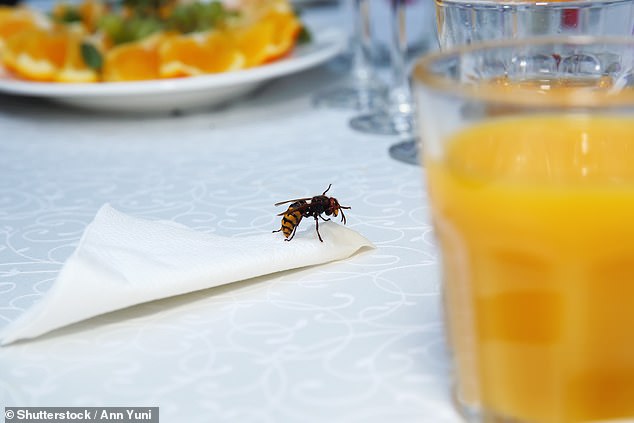
Understanding Wasp Behavior During Summer Outings
As the warm summer months arrive, they bring with them a mix of sunny days, family picnics, and unfortunately, the occasional wasp. These uninvited guests can turn a peaceful outdoor gathering into a chaotic scene. However, experts have shared valuable insights on how to handle encounters with wasps without escalating the situation.
Professor Seirian Sumner, a specialist in Behavioral Ecology at University College London, has emphasized that running away or making sudden movements is one of the worst reactions to a wasp's presence. She explained that such actions mimic those of a predator, which could trigger the wasp’s defensive instincts. Instead, she recommends keeping your mouth closed and avoiding heavy breathing to reduce the release of carbon dioxide, a signal that might provoke an attack.
Identifying Common Wasp Species
The wasps most commonly seen at picnics are typically the common yellowjacket and the German wasp. These are usually worker wasps, all female, and their primary goal is to gather food for their sibling larvae. Understanding this behavior can help you manage their presence more effectively.
One practical approach suggested by Professor Sumner is to offer the wasp a portion of what it has taken from your plate. By observing what the wasp is eating, you can determine what kind of offering would be most appealing. This not only satisfies the wasp but also allows you to enjoy your meal without disturbance. Gradually moving the offering further away from your food can help maintain peace during your outing.
Insights into Wasp Colony Dynamics
Watching the feeding habits of wasps can also provide clues about the state of their colony. If a wasp is interested in protein-rich foods like ham, it indicates that the colony is likely full of hungry larvae. This phase typically occurs around mid-to-late August. On the other hand, if a wasp is drawn to sugary items such as jam or fizzy drinks, it suggests the colony is in its 'twilight' phase.
Professor Sumner highlights that many people view wasps as aggressive pests, but this perspective overlooks their ecological importance. Wasps play a crucial role as pollinators and natural predators of other insects. Learning to coexist with them can contribute to a healthier environment, especially considering the ongoing loss of wildlife globally.
Changing Patterns in Wasp Activity
Recent observations indicate that wasps are becoming more active earlier than usual this year, thanks to the unusually warm weather. Normally, these insects are most aggressive in late autumn. However, the current conditions have led to an earlier increase in their population.
Laurence Edwards, a beekeeper and entomologist, has noted that the hot spring and summer have created ideal nesting environments, resulting in larger colonies forming much sooner than typical. He refers to this phenomenon as a "perfect swarm" of environmental factors. This situation calls for increased awareness, not only for personal safety but also to protect other insects like bees.
The Importance of Understanding Wasp Behavior
The wasp's sting serves as a defense mechanism, and unlike bees, wasps can sting multiple times. This makes it essential to remain calm and avoid provoking them. By understanding their behavior and taking appropriate measures, we can enjoy our outdoor activities while minimizing conflicts with these often-misunderstood creatures.
Tidak ada komentar:
Posting Komentar